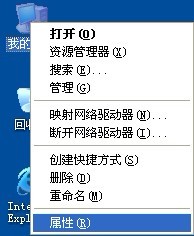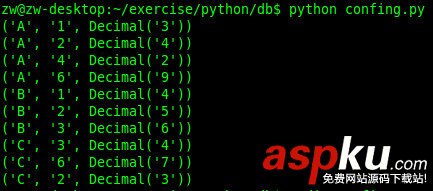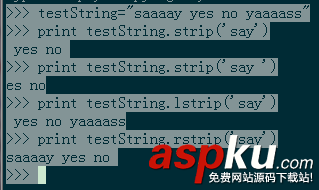C語言結構體,可謂是C強大功能之一,也是C++語言之所以能衍生的有利條件,事實上,當結構體中成員中有函數指針了后,那么,結構體也即C++中的類了。
C語言中,結構體的聲明、定義是用到關鍵字struct,就像聯合體用到關鍵字union、枚舉類型用到enum關鍵字一樣,事實上,聯合體、枚舉類型的用法幾乎是參照結構體來的。結構體的聲明格式如下:
struct tag-name{{member 1;…member N;}; 因此,定義結構體變量的語句為:struct tag-name varible-name,如struct point pt;其中,point 為tag-name,pt是結構體struct point變量。當然,也可以一次性聲明結構體類型和變量,即如下:struct tag-name {…} x,y,z;就類似于int x,y,z;語句一樣。也可以在定義結構體變量時即賦初值,即變量初始化,struct point pt={320,200};
當然,也就可以有結構體指針、結構體數組了。訪問結構體變量中的member的方法有:如果是由結構體變量名來訪問,則是structure-variable-name.member;如果是由結構體變量指針來訪問,則是structure-variable-pointer->member;
好了,上面的不是重點,也不難掌握,只是細節問題。結構體具有重要的應用,如下的:
如自引用的結構體,常用來作為二叉樹等重要數據結構的實現:假設我們要實現一個普遍的問題的解決算法——統計某些輸入的各單詞出現的頻數。由于輸入的單詞數是未知,內容未知,長度未知,我們不能對輸入進行排序并采用二分查找。……那么,一種解決辦法是:將已知的單詞排序——通過將每個到達的單詞排序到適當位置。當然,實現此功能不能通過線性排序,因為那樣有可能很長,相應地,我們將使用二叉樹來實現。該二叉樹每一個單詞為一個二叉樹結點,每個結點包括:
- a pointer to the text of the word
- a count of the number of occurences
- a pointer to the left child node
- a pointer to the right child node
其寫在程序中,即:
struct tnode{/*the tree node:*/char *word;/*points to the next*/int count;/*number of occurences*/struct tnode *left;/*left child*/struct tnode *right;/*right child*/} 完成上述功能的完整程序如下:
#include<stdio.h> #include<ctype.h> #include<string.h> #include"tNode.h" #define MAXWORD 100 struct tnode *addtree(struct tnode *,char *); void treeprint(struct tnode *); int getword(char *,int); struct tnode *talloc(void); char *strdup2(char *); /*word frequency count*/ main() { struct tnode *root; char word[MAXWORD]; root=NULL; while(getword(word,MAXWORD)!=EOF) if(isalpha(word[0])) root=addtree(root,word); treeprint(root); return 0; } #define BUFSIZE 100 char buf[BUFSIZE];/*buffer for ungetch*/ int bufp=0;/*next free position in buf*/ int getch(void)/*get a (possibly pushed back) character*/ { return (bufp>0)? buf[--bufp]:getchar(); } void ungetch(int c)/*push back character on input*/ { if(bufp>=BUFSIZE) printf("ungetch:too many characters/n"); else buf[bufp++]=c; } /*getword:get next word or character from input*/ int getword(char *word,int lim) { int c,getch(void); void ungetch(int); char *w=word; while(isspace(c=getch() )); if(c!=EOF) *w++=c; if(!isalpha(c)){ *w='/0'; return c; } for(;--lim>0;w++) if(!isalnum(*w=getch())){ ungetch(*w); break; } *w='/0'; return word[0]; } /*addtree:add a node with w,at or below p*/ struct tnode *addtree(struct tnode *p,char *w) { int cond; if(p==NULL){/*a new word has arrived*/ p=talloc();/*make a new node*/ p->word=strdup(w); p->count=1; p->left=p->right=NULL; }else if((cond=strcmp(w,p->word))==0) p->count++;/*repeated word*/ else if(cond<0)/*less than into left subtree*/ p->left=addtree(p->left,w); else /*greater than into right subtree*/ p->right=addtree(p->right,w); return p; } /*treeprint:in-order print of tree p*/ void treeprint(struct tnode *p) { if(p!=NULL){ treeprint(p->left); printf("%4d %s/n",p->count,p->word); treeprint(p->right); } } #include<stdlib.h> /*talloc:make a tnode*/ struct tnode *talloc(void) { return (struct tnode *)malloc(sizeof(struct tnode)); } char *strdup2(char *s)/*make a duplicate of s*/ { char *p; p=(char *)malloc(strlen(s)+1);/*+1 for '/0'*/ if(p!=NULL) strcpy(p,s); return p; } 其中,其它的關于union、enum這里就不多說了,再說一個關于結構體的非常重要的應用——位操作:
當然,我們知道,對于位操作,我們可通過#define tables(即用宏和C中的位操作來實現)
如:
#define KEYWORD 01 /*0001*/#define EXTERNAL 02 /*0010*/#define STATIC 04 /*0100*/
或
enum{KEYWORD =01,EXTERNAL =02,STATIC =04}; 那么,flags|=EXTERNAL|STATIC;將打開flags的EXTERNAL和STATIC位,而
flags&=~(EXTERNAL|STATIC);將關閉flags的EXTERNAL和STATIC位.
然而,上述定義的位模式可以用結構體如下寫:
struct{unsigned int is_keyword:1;unsigned int is_extern:1;unsigned int is_static:1;}flags;/*This defines a variable called flags that contains three 1-bit fields*/ 那么,上述打開相應位的操作為:
flags.is_extern=flags.is_static=1;
上述關閉相應位的操作為:
flags.is_extern=flags.is_static=0;



















